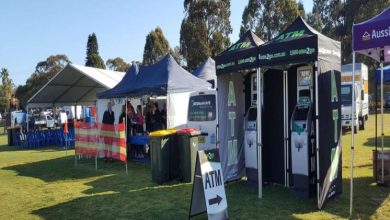Emergency Response and Disaster Management on Oil Rig

Oil rigs are marvels of engineering, standing tall and resilient against the elements miles away from shore. However, with great industrial prowess comes significant risk. Emergencies on oil rigs can range from fires and explosions to oil spills and natural disasters.
Effective emergency response and disaster management are crucial to protecting workers’ lives, the environment, and oil rig production. This article delves into the critical components of emergency preparedness on oil rigs, the types of emergencies that can occur, and the best practices for disaster management.
Understanding the Risks
Oil rigs operate in challenging environments where multiple hazards can arise. The most common emergencies include:
- Fires and Explosions: These can be triggered by equipment failure, human error, or natural events like lightning strikes.
- Oil Spills: A significant environmental threat, oil spills can occur due to blowouts, pipeline ruptures, or equipment malfunctions.
- Natural Disasters: Hurricanes, earthquakes, and tsunamis can pose severe risks to offshore platforms.
- Structural Failures: Issues with the rig’s structural integrity can lead to catastrophic consequences.
- Medical Emergencies: The isolation of oil rigs means that medical emergencies require a swift and effective response.
Understanding these risks is the first step in creating a robust emergency response plan.
Preparedness and Training
Regular Drills and Simulations
Regular drills and simulations are among the most effective ways to prepare for emergencies. These exercises help ensure all personnel know their roles and responsibilities during an emergency. Drills include fire evacuation procedures, oil spill containment, and emergency medical response.
Comprehensive Training Programs
Training programs should cover a wide range of scenarios and skills. Workers must be proficient in using fire suppression systems, lifeboats, and personal protective equipment. Training in first aid, CPR, and basic medical response is also essential. Continuous education and certification ensure that skills remain sharp and up-to-date.
Emergency Response Plans
Developing a Response Plan
An emergency response plan is a detailed document outlining procedures for various emergencies. It includes evacuation routes, communication protocols, and the roles of emergency response teams. The plan should be tailored to the specific rig and its unique risks.
Communication Protocols
Effective communication is crucial during an emergency. The response plan must establish clear lines of communication, both within the rig and with external emergency services. Regular tests of communication systems, such as radios and satellite phones, ensure they function correctly when needed.
Disaster Management Strategies
Fire and Explosion Management
Oil rigs have sophisticated fire suppression systems, including sprinklers, foam dispensers, and fire extinguishers. These systems activate automatically or can be manually triggered in a fire. The isolation of fuel sources and the shutting down of equipment are critical steps to prevent the spread of fire.
Oil Spill Containment
Oil spill containment involves several strategies. Booms and skimmers are deployed to contain and recover spilled oil. Chemical dispersants may be used to break down the oil, although their environmental impact must be considered. Rig crews must be trained to deploy these tools quickly and effectively.
Response to Natural Disasters
Natural disasters require rapid and decisive action. Early warning systems for hurricanes and tsunamis give rigs time to secure equipment and evacuate non-essential personnel. Structural assessments ensure that the rig can withstand severe weather. Evacuation procedures must be practiced regularly to ensure all personnel can safely transport to shore.
Medical Response
Given the isolation of oil rigs, medical emergencies require prompt action. Each rig should have a well-equipped medical facility and trained medical personnel. Telemedicine services can provide additional support, allowing offshore medics to consult with onshore doctors. In severe cases, evacuation via helicopter or boat may be necessary.
Environmental and Legal Considerations
Environmental Protection
Disaster management on oil rigs extends beyond immediate response to long-term environmental protection. This involves regular ecological impact assessments and adherence to regulations set by environmental agencies. Rig operators must have plans to restore affected ecosystems during a spill or other environmental incident.
Legal Compliance
Oil rigs operate under strict regulatory frameworks. Compliance with these regulations is non-negotiable. Regular audits and inspections ensure that rigs meet safety and environmental standards. Adherence to legal protocols is essential in an emergency to mitigate liabilities and protect the company’s reputation.
Conclusion
Emergency response and disaster management on oil rig production are complex but vital aspects of offshore operations. Oil rig operators can protect their workforce, the environment, and assets by understanding the risks, preparing rigorously, and adhering to best practices. If you need more information, contact a piping company for expert advice and comprehensive solutions tailored to your needs.




